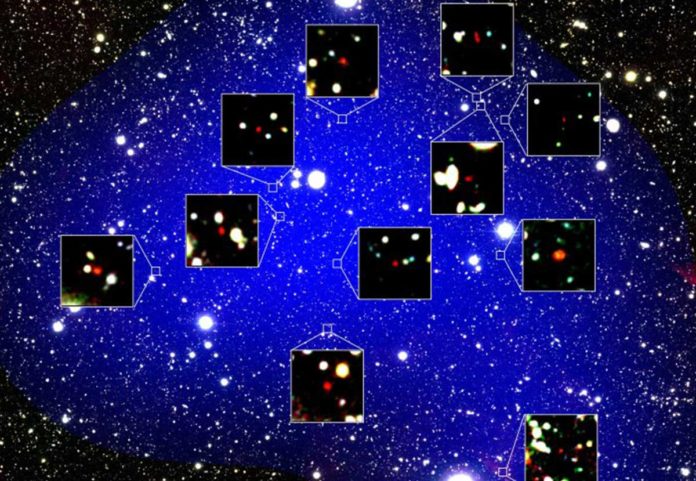In the present universe, full-formed galaxy clusters contain thousands of member galaxies including tens of massive galaxies. These clusters are the largest astronomical objects in the universe. They are associated with one another in an enormous network of galaxies that form an essential part of the enormous scale structure of the universe. Be that as it may, astronomers are uncertain how they framed over the 13.8-billion-year history of the universe.
Now, an international team of astronomers, led by the National Astronomical Observatory of Japan and including Imperial College London researchers, has discovered a new protocluster named z66OD at 13 billion light-years away. It is the earliest protocluster ever observed, which means such large-scale structures were around very early in the universe’s existence.
The discovery was made using the Subaru, Keck, and Gemini Telescopes. In the map of the universe created by the Subaru telescope, the group previously found a candidate of a protocluster in an area where galaxies were 15 times more concentrated than anticipated.
Scientists conducted follow-up observations including the Keck and Gemini telescopes and affirmed 12 galaxies in the same location 13 billion light-years away.
They discovered that the stars forming within the clusters are five times larger than other galaxies with similar masses in the same period of the universe. This is because of the large amount of gas in the system, a crucial ingredient for star formation, and eventually, galaxy formation.
Lead researcher Yuichi Harikane, from the National Astronomical Observatory of Japan, said: “To know when a protocluster forms, we need to go back in time by looking deeper into space. However, a protocluster is a rare and unique system with an extremely high density of galaxies distinct from other systems, and not easy to find.”
“To overcome this problem, we used the new wide-field imager, Hyper Suprime-Cam on the Subaru telescope, and investigated a large area of the sky to make a huge map of the universe that included the rare protocluster.”
Using Subaru telescope, scientists earlier spotted giant gaseous nebula called Himiko in the same region. An in-depth observation shows that Himiko is a massive galaxy, accompanied by 11 other complete galaxies.
Co-author Masami Ouchi, from the National Astronomical Observatory of Japan and the University of Tokyo, said, “We were also surprised to discover that the massive Himiko galaxy was not in the center of the protocluster. It is still not understood why Himiko is not located in the center. This result will be a key to understanding the connection between galaxy clusters and massive galaxies.”
The study of the protocluster is published today in The Astrophysical Journal.
